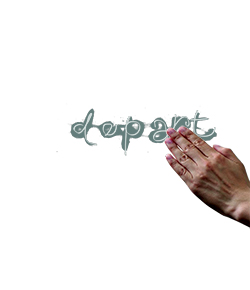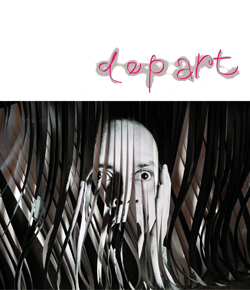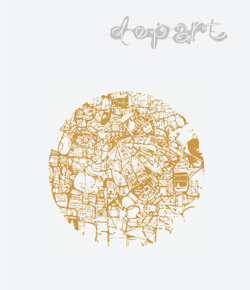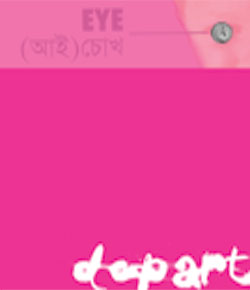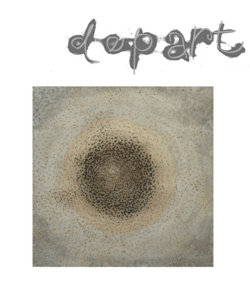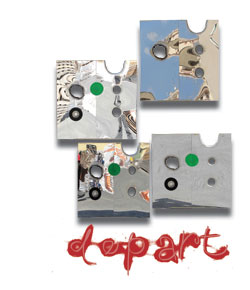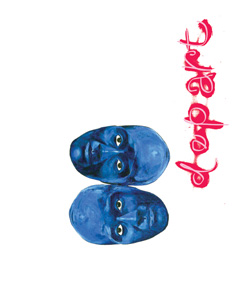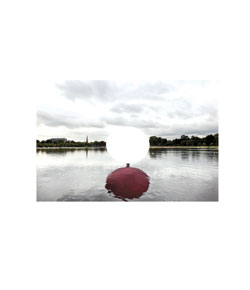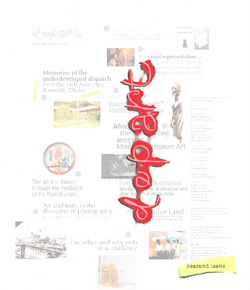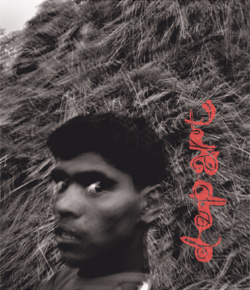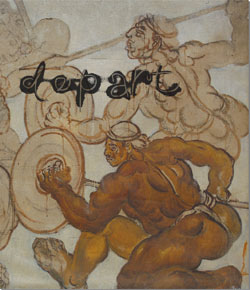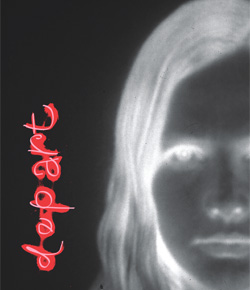Features
The visual representation of developing countries by developmental agencies and the western media
Perceptions of the developing world

I was staying with friends in Newry in Northern Ireland. Paddy and Deborah had kindly made their five year old daughter's room available for me. Corrina was friendly and curious and would spend a lot of time in the room. One day as I was clearing my pockets of change I had accumulated, she suddenly remarked 'but you've got money, but, but you're from Bangladesh.' The family had just returned from a trip to Bangladesh. Paddy was a development worker and they had visited many of the projects. At the tender age of five, Corrina knew that Bangladeshis did not have money.
Who portrays whom
A recent fax from the National Geographic Society Television Division, to our picture library - dedicated to promoting the work of indigenous photographers and writers - asked if we could help them with the production of a film that would include the Bangladeshi cyclone of '91. They wanted specific help in locating 'US, European or UN people ..... who would lead us to a suitable Bangladeshi family.'

The situation is not unusual. Invariably films about the plight of people in developing countries show how desperate and helpless the people are; however, the people who realize their plight and come forward to their support are usually white foreigners. In some cases even local people are seen to be helping, but invariably it is a foreigner who has enlightened them about the way out, and it is always a foreign presenter who speaks out for them. The foreigner is so strong, forthright and caring that she could almost hand over the microphone to them, if only they could speak for themselves, if only they understood.
The construction of a stereotype
Wide angle b/w shots, grainy, high contrast images characterize the typical third world helpless victim. It is common to see huge billboards with a dying malnourished child in a corner with outstretched arms. A clear message in polished bold font in the top-left corner reads 'We shall always be there.' A reality constructed for and by those who want us to forget the implications. That 'you (the developing world) shall always be there.' The "client group", those who receive aid, remain in that role (a passive existence necessary to be maintained)
The assumptions and how they are validated
The end product in all these cases is the same. The Western public gets to see a distorted view of the developing world; a situation for which the public in question can hardly be totally free of blame. School children in the UK think 50-75% of the world children are visibly malnourished (the real figure is less than 2%), and that only 10-20% of the world's six to twelve year olds start school (the real figure is almost 90%), and that the rate of population growth in the developing world is increasing (it is decreasing in every part of the developing world including Africa). The fact that a high proportion of the information about the developing world for the average western reader comes from fund raising campaigns is another cause of this gross distortion.

There is of course the other tack where 'Third World Participation' is created in the form of guided tours to paid Third World journalists who are given what amounts to a censored view of well to do countries. In a recent tour of the United States organized by the United States Information Agency, I was accompanied throughout by a person from the State Department, and my request to visit Harlem was turned down due to 'security reasons.' My report on the trip was never made public. That people from the developing world do go on these trips and cater to these forms of tokenism is of course a slur on their own professionalism.
Organizations like the World Bank do sponsor studies by people known to be mildly critical, with the proviso that the World Bank would decide if the work would be published, thereby retaining ultimate control.
The business of development
Every organization has a goal, a means and a method. The apparent goal of donor organizations is to make the recipients self sufficient. For this it uses tax payer's money, usually a fraction of a percent of its GNP. Genuine aid also constitutes a tiny fraction of the recipient's income. The method varies, but invariably involves an input of a lot of personnel, and materials from the donor country which is paid for by the same money that was given out as aid. An organization's growth depends on its ability to generate more work. There are a limited number of recipient countries, and a restricted market. All donor agencies compete for this small market. A recipient country that truly becomes self sufficient (unheard of in the history of development), no longer needs a donor. The donor agency, by fulfilling its manifesto would make itself redundant. The same applies for a development worker. The myth of humanitarian aid, however, has long been discarded, and the donors are now openly more concerned about governance, (how we spend their money) and there has been a visible shift towards administering the flow of funds rather than the humanitarian utilization of funds. Donor agencies invariably declare themselves to be non-political. The very act of giving money, or its equivalent, to people who are badly deprived is strongly political. The development workers are in a very powerful position. They are people who have to be pleased if one wants a loan, or access to education, or food.

The truth is that despite all their claims about delegation, very little decision making involves local people. And very little decision making by the foreign experts involves in-depth local knowledge. It would be hazardous for these foreign experts to permit the infiltration of people who could penetrate their information chain, something that photographs are particularly good at doing. Culture, once considered a hindrance to development has now become fashionable to promote. But it has to be a particular type of culture packaged in a particular type of way.
The "image business" is inextricably linked with the "development business". From slide shows in remote villages to slick exhibitions in posh hotels, from A5 flyers to coffee table books, from fund raising campaigns to annual reports, image hungry developmental agencies depend heavily on image makers. One feeds off the other. It is hardly surprising therefore that the image producers (read mostly white men photographers) produce images that are good for business for both industries. Development or fair representation does not enter the equation.
The Marketing Strategy

There is of course the need (amongst industrialized nations) to show the results of donor aid. The recent major feature in the Observer newspaper in the UK on OXFAM, was called the Poverty Supplement, and in Observer's own words 'The main aim of the Poverty Supplement was to persuade our readers to support OXFAM's work financially. This was obviously successful.' The supplement was in fact an advertisement in the Observer to the tune of aboutUSD25,000 . Pledges from the Observer readers amounted to a third of the annual budget for OXFAM's development partnerships in Zambia. When a similar proposal was made for CONCERN's projects in Bangladesh, though CONCERN had proposed a local photographer of international standing who had been working on the projects for over six years, and the Observer had initially agreed, they backed out in the last minute, and used a British photographer. They did however use stock photographs from the Bangladeshi photographer, but were only interested in the slum and poverty pictures which were a small part of the total work.
The power of images

A camera can be a tool of extreme sensitivity or no sensitivity at all. A photograph can:
1) Be an eye check on memory
2) Give detailed information
3) Show what we cannot see
4) Store away complex data for future analysis
More importantly it can influence people and create powerful emotional responses. We are aware of the meaning of words, but forget that images may have different meanings to different people, and that the meaning of a photograph can depend to a large extent on the context in which it is used. 'The Camera never lies' is the biggest lie of all.
The need for an alternative education
If we are to genuinely work for social change, what direction should developmental education go in? Teach local people about the fruits of good nutrition, family planning and education of their daughters. That is extremely important and is largely being attempted. What about teaching people (particularly development workers) to look for other options besides aid? What of creating role models of Bangladeshis running international developmental organizations, and giving these Bangladeshis the support and the clout necessary for them to succeed? What about foreigners trying to learn Bangla, and veering away from the policy that success in the development ladder correlates directly with a person's competence at English? What about use of images that show a positive aspect of the country rather than the fund collecting images of helpless destitutes? What about not distorting captions by substituting them with dramatized, orientalist plethora? What about desisting from patronizing the government and genuinely working with them rather than creating what is in effect a parallel government? What about teaching those working in development what the word really means?

The credit lines in articles dealing with poorer countries have no indigenous names. When questioned why this was so, picture editors and development workers claimed that there simply weren't people in these countries qualified to do the job. Their reliability, their professionalism, their ability to understand the brief was all suspect. In response we began to make a survey of indigenous photographers working in their own countries. The response, both in terms of numbers and the quality of the work was overwhelming. If a small organization based in Bangladesh armed with no more than lists obtained from interested friends can pool together an impressive list of talented indigenous photographers doing good work in their own countries why has it been so difficult for the development agencies to 'discover' them. Discovery is of course a key word when photographing the natives. The photographer steps down from the plane, 'discovers' the native and goes back with the scoop. That discovery implies past ignorance that seems to never get noticed. Yet there are people who did know the local people, understood their language, were respectful of their culture and understood the underlying causes of things. These are the people, skilled, available and able, but who do not exist. They have not been 'discovered'.
The history of photography fails to mention the work done by photographers in poorer countries. While the heroic feats of Hill and Adamson are extolled, the photographers who had to import all their equipment and materials from the wealthier countries and documented their cultures for little financial gain have never been registered in the archives. A few exceptions are there, like the Indian photographer Din Dayal, who was given the title Raja by the British for having served the crown. Other much more important names in the field from the same period, like Ali Ahmed Khan, never get mentioned, until one remembers that Khan had led a rebel attack on British troops.
In five years of operating as a picture library based in the developing world, we have had many requests for images of Bangladesh by publishers, NGOs, and donor agencies. The most frequently requested pictures so far have been of floods, cyclones, and slums. There was even a request for flood inundation of Dhaka in the floods in '93, which the client insisted had taken place. We have not for instance yet been asked for a picture of a person at a computer terminal, a very commonly stocked photograph in western libraries, and one which we too have severals. In one nstance the client, an educational publisher in the UK insisted that our photograph of a tila (little stupa in the middle of a pond, used as cyclone shelters) was much too small and that they knew of huge giant stupas, which local photographers and community workers who had extensively combed the cyclone affected areas had never seen nor heard of.
The danger of being left out is not as great as the danger of being nullified. Books that teach you how to be a successful photographer, he ones that teach you the secrets of the trade, teach essentially how to become occidental. Since the person making the most important decisions regarding the usage of a photograph is invariably the person most distant from the event itself, the photographer's 'formula' for producing acceptable pictures is to regurgitate editorial policy regardless of what is observed. That is what the indigenous photographer must produce if he/she is to get ahead. That is what makes them begin to 'exist.' The danger therefore, is of becoming a sheep in wolf's clothing, and eventually of becoming a wolf.
Pretty much all NGOs seem to have the usual 'income generating activities', the savings groups where the villagers gather round in a circle and sign the passbook, the functional education classes where village folk
are taught urban middle-class expressions that even in cities only get used in formal situations. Where they are taught 'the policeman is your friend...' and they know otherwise. Photographs of the activities of a hundred different NGOs would be largely identical. Where is the training to network that the donor circuit itself thrives on? Where is the emphasis on information technology that allows the richer countries to retain their stranglehold? The poor in these countries have been observed, analyzed and understood, but why have they been built into a cell with no exit? Why are entire nations guinea pigs for foreign anthropologists, sociologists, economists and photographers?
In a recent effort by an independent agency to install E-Mail in Bangladesh for setting up an inter-nation and a South-South dialogue, it was discovered that many NGOs already had their own dedicated E-Mail line, but had not offered the service to others, even to other NGOs. Information appears to be a resource that people are very secretive about. Access to information is something that developing countries are selectively denied. The nature of the images representing developing countries is an index of the media control that will prevent developing countries from developing. A Halloween song sums up some of the attitudes portrayed:
(Sung to the tune of WE THREE KINGS)
We Trick or Treaters in bright costumes are
Asking your help for children afar.
We want no candy But cash is dandy,
Here is our UNICEF jar.
Oooooooooooooooooooh
Help the children, in foreign lands,
They are starving do what you can,
They have nothing to eat let alone no treats
Reach out and help your fellow man.
(there is now a non-sexist version with fellow human).This article is available in shahidul@drik.net and was written in 1994.






